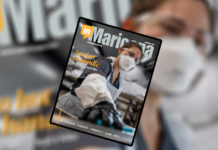
From daily conversations to strategic planning meetings, the one tool used over and over again is communication.
The spoken word is powerful. But there is another kind of communication — body language. These two forms of communicating can make for a productive exchange, or destroy the moment.
The most significant form of communicating, however, is listening.
Understanding these components and their impact is critical to getting what you want. Talking with purpose is an energizing and effective exercise and helps you achieve your desired outcome.
If I had to rank these three in order of importance, it would be 1) listening, 2) body language and 3) verbalizing.
Take a minute to reflect on a recent conversation. It could be with a significant other, a friend or colleague. Do you remember how it went? Were you forming your response while the other person was talking, or were you asking for more information from the person with statements like “help me understand” or “if I heard you correctly.”
See the difference? Effective communication utilizes “empathic listening.” Simply put, it is the exercise of truly understanding what the other individual is saying — really saying, and not formulating your response while the individual is talking. Responding as quickly as possible is the norm. It should not be.
Consider these effective communications as a tool to put in your toolbox. This tool is particularly effective at work.
Conflicts present in the workplace can be resolved rather quickly if this effective communication tool is used. Why? By asking probing questions, you validate the individual and the individual’s points of view. It does NOT mean you necessarily agree with the point of view, but you validate that it is a point of view; more importantly, it validates that person. This approach levels the playing field and opens up dialogue instead of positioning, which is so important.
Even if there is no agreement, you are at a place where it is OK to agree to disagree.
I encourage you to try this tool. It won’t come naturally until you practice. In time, you will see the effectiveness and as a result you will become much more skilled in using the three forms of communication — talking, body language and listening — and you will much more frequently get the results you want.













![Carl’s Jr plans to “open soon” An exterior view of the new Carl's Jr. restaurant along John Wayne Parkway on May 7, 2024. [Elias Weiss]](https://www.inmaricopa.com/wp-content/uploads/2024/05/E1C66482-CB4C-4FD0-BA30-35CECE93F4BE-100x70.jpeg)

![Filiberto’s eyes building Maricopa restaurant An exterior view of a Filiberto's Mexican Food restaurant at an unknown location and date. [Jessica Boehm/Axios]](https://www.inmaricopa.com/wp-content/uploads/2024/05/axios-050724-filibertos-screenshot-e1715117410101-100x70.jpg)